Packing List for Camping in a Tent: The Ultimate Guide
Are you planning a camping trip and wondering what to pack for a comfortable and safe experience?
Camping in a tent can be an exhilarating adventure, but it requires careful planning to ensure you have all the essentials.
This comprehensive packing list will guide you through everything you need for a successful camping trip in a tent.
Essential Camping Gear
1. Tent Footprint for Extra Ground Protection
A tent footprint is a crucial item that often gets overlooked. It provides extra protection for your tent against various elements like sand, sharp grass, and murky ground.
Most tent footprints are waterproof, adding an additional layer of protection to your tent’s base.
Measure your tent’s base to ensure you get the right size footprint, or purchase one specifically designed for your tent model.
A tent footprint serves as a barrier between your tent and the ground. It protects the tent’s floor from abrasion, punctures, and moisture, extending the lifespan of your tent.
Ensure the footprint fits perfectly underneath your tent. Choose a footprint made of durable, waterproof material like polyethylene or oxford cloth.
Place the footprint underneath your tent, ensuring it doesn’t extend beyond the tent’s edges to prevent water from collecting and seeping underneath. If you don’t have a tent footprint, a tarp can serve as an alternative, but it may not fit as perfectly.
2. Stakes to Keep Everything in Place
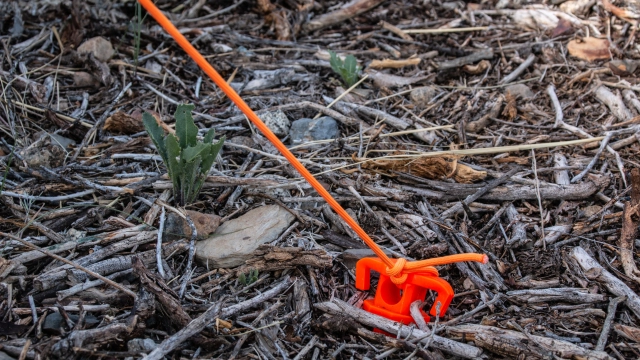
Stakes, or pegs, are essential for securing your tent. They come in various shapes and sizes and are designed to keep your tent in place, protecting it from strong winds.
Choose stakes based on the size of your tent and the terrain you’ll be camping on. Ensure they are made of durable materials suitable for the ground conditions.
Different stake designs suit various ground conditions. For example, V-stakes are versatile and suitable for most terrains, while snow stakes are designed for frozen ground.
Use a mallet or a rock to drive stakes into the ground at a 45-degree angle, with the top of the stake pointing away from the tent for better holding power. In soft or sandy ground, use wider or longer stakes for better grip.
3. Sleeping Bags for Comfortable Nights
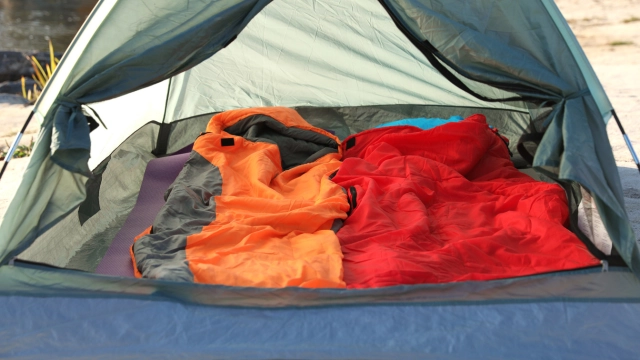
Sleeping bags provide insulation and cushioning, ensuring a comfortable night’s sleep while camping.
Choose a sleeping bag with a temperature rating suitable for the expected weather conditions. A 20°F to 30°F bag is versatile for three-season camping.
Rectangular bags offer more room but may not be as warm as mummy-shaped bags, which fit snugly around your body to retain heat.
Sleeping bags can be filled with synthetic materials or down. Down bags are lighter and more compressible but lose insulation when wet. Synthetic bags retain insulation even when damp.
Use a sleeping bag liner to add extra warmth and keep your bag cleaner. Store your sleeping bag loosely in a large, breathable bag to maintain its loft and insulation when not in use.
4. Sleeping Pad for Added Comfort
Sleeping pads provide additional cushioning and insulation from the cold ground, enhancing your sleep comfort. Choose a pad that fits your body size and provides enough cushioning for comfort.
Air pads require manual inflation, while self-inflating pads expand automatically when unrolled. Closed-cell foam pads are lightweight and durable but less comfortable. Choose a pad with a higher R-value for better insulation in colder conditions.
Inflate your pad before bedtime to allow it to expand fully. Place your pad inside your tent to prevent moisture absorption and maintain insulation.
5. Camping Chairs for Relaxation
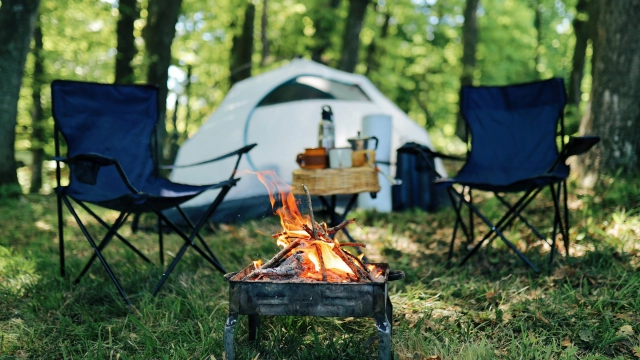
Camping chairs provide a comfortable place to sit and relax after a day of outdoor activities. Look for chairs that are lightweight, foldable, and easy to carry. Ensure the chair can support your weight comfortably.
Choose a chair with a sturdy frame and comfortable seating material. Some chairs offer additional features like cup holders, headrests, or built-in coolers.
Set up your chair on level ground for stability. Consider bringing a small, foldable table for holding drinks, snacks, or other items.
6. Lights to Navigate the Dark
Lighting is essential for navigating your campsite at night, cooking, and performing other tasks after dark.
Pack electric torches, solar-powered torches, or battery-operated lanterns. Ensure you have enough batteries or a solar charger to keep your lights powered throughout the trip.
Choose between battery-operated, rechargeable, or solar-powered lights. Lights with adjustable brightness settings are versatile for various tasks.
Bring extra batteries or a portable charger for your lights. Hang a lantern from the ceiling of your tent for interior lighting.
7. Cooking Utensils for Meal Preparation
Cooking utensils are necessary for preparing meals while camping, ensuring you stay well-fed and energized. Choose lightweight, durable cookware with lids for efficient heating and easy packing.
Include a pot, kettle, and frying pan for basic cooking needs. Consider bringing a camping stove for convenience and don’t forget cooking fuel.
Prepare some meals at home before your trip to save time and effort at the campsite. Bring a small, collapsible table for food preparation and cooking.
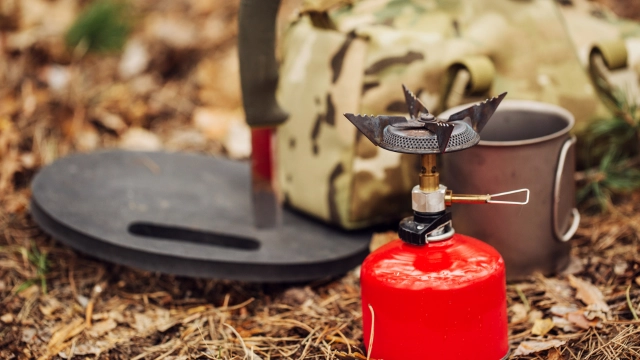
8. Eating Utensils for Mealtime
Eating utensils are essential for enjoying your meals comfortably while camping. Choose utensils made of durable materials like stainless steel, plastic, or titanium. Look for lightweight, compact utensils that are easy to pack.
A complete set should include plates, bowls, cups, forks, spoons, and knives.
Bring reusable utensils to minimize waste and environmental impact. Pack a small cutting board and sharp knife for food preparation.
9. Toiletries for Good Hygiene
Maintaining good hygiene is crucial for your health and comfort while camping. Pack essential toiletries like biodegradable soap, toothbrush, toothpaste, hand sanitizer, toilet tissue, and shampoo.
Choose eco-friendly toiletries to minimize environmental impact. Ensure your kit includes essentials like toothbrush, toothpaste, dental floss, soap, shampoo, deodorant, and toilet paper.
Use a portable camp shower or solar shower for bathing. Bring a small trash bag for disposing of waste responsibly.
10. First Aid Kit for Emergencies
A first aid kit is essential for treating minor injuries and emergencies that may occur while camping.
Choose a compact, lightweight kit that is easy to carry. Ensure your kit includes bandages, gauze, adhesive tape, antiseptic wipes, tweezers, scissors, pain relievers, and any personal medications. Read our Camping First Aid Kit Checklist.
Check the expiration dates of medications and replace them as needed. Familiarize yourself with basic first aid techniques before your trip.
11. Tent Repair Kit for Quick Fixes
A tent repair kit allows you to fix minor damages to your tent, ensuring it remains functional and protective.
Include fabric patches for repairing holes or tears in the tent material, a strong, waterproof adhesive for applying patches, and a small pair of scissors, a needle, and thread for making repairs.
Practice using your repair kit at home to familiarize yourself with the process. Inspect your tent regularly for any signs of wear or damage.
Additional Necessities
12. Knife and Multi-tool
A good knife or multi-tool is versatile for various camping tasks, from food preparation to gear repairs.
Choose a knife with a sharp, durable blade made of stainless steel or high-carbon steel. A multi-tool should include pliers, screwdrivers, a can opener, and other useful tools. Opt for a compact, lightweight tool that is easy to carry.
Keep your knife sharp and clean for optimal performance. Store your multi-tool in an accessible place for quick use.
13. Gas Lighter and Matches
Gas lighters and matches are essential for starting fires, cooking, and other tasks requiring a flame.
Choose a windproof lighter or waterproof matches for reliable performance in various conditions. Bring extra lighters or matches in case of loss or malfunction.
Store lighters and matches in a waterproof container to keep them dry. Practice safe fire-starting techniques to prevent accidents.
14. Firewood
Firewood is necessary for building campfires, providing warmth, light, and a cooking source. Choose dry, seasoned wood that burns efficiently and produces minimal smoke.
Estimate the amount of firewood you’ll need based on the duration of your trip and the expected weather conditions.
Collect firewood responsibly, following Leave No Trace principles. Store firewood in a dry place to prevent moisture absorption.
15. Solar Charger
A solar charger allows you to keep your electronic devices powered while camping, ensuring you stay connected and informed.
Choose a solar charger with sufficient power output to charge your devices efficiently. Look for a compact, lightweight charger that is easy to carry. Ensure the charger is water-resistant and durable for outdoor use.
Position your solar charger in direct sunlight for optimal charging. Bring a portable power bank as a backup power source.
16. Radio and Communication Devices
Radio and communication devices help you stay informed about weather conditions, emergencies, and other important information while camping.
Choose devices with a sufficient range to maintain communication in remote areas. Opt for devices with long battery life or solar-powered options. Look for devices with NOAA weather alerts, emergency channels, and other useful features.
Test your communication devices before your trip to ensure they are functioning properly. Familiarize yourself with emergency communication protocols.
17. Water Filter/Purifier
A water filter or purifier ensures you have access to safe drinking water while camping, preventing waterborne illnesses.
Choose a filter that removes bacteria, protozoa, and other contaminants effectively. Look for a compact, lightweight filter that is easy to carry. Ensure the filter has a sufficient capacity to meet your water needs.
Always filter or purify water from natural sources before drinking. Bring a backup water purification method, such as iodine tablets.
18. Bug Repellent
Bug repellent helps keep insects at bay, preventing bites and the spread of insect-borne diseases.
Choose a repellent containing DEET, picaridin, or oil of lemon eucalyptus for effective protection. Opt for a repellent that provides long-lasting protection.
Apply bug repellent according to the manufacturer’s instructions. Wear long-sleeved clothing and pants to minimize exposed skin.
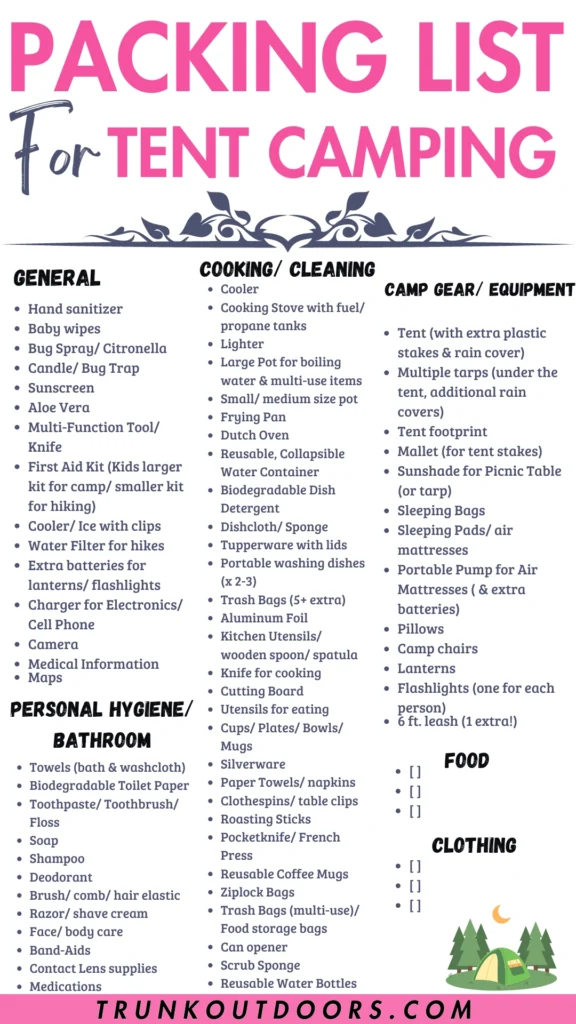
We have created this Free Packing List for Tent Camping printable that you can use. It is a PDF document for you to print.
Conclusion
Preparing for a camping trip in a tent requires careful planning and packing the right gear. By following this comprehensive packing list, you’ll ensure a comfortable, safe, and enjoyable camping experience.
Tailor the list to your specific needs, considering factors like trip duration, group size, and campsite location. Happy camping!